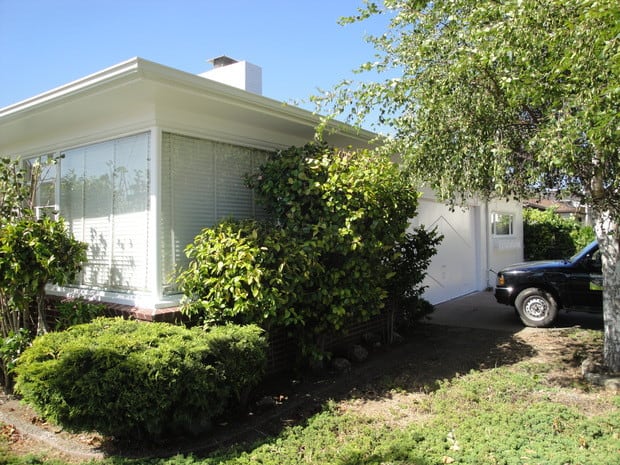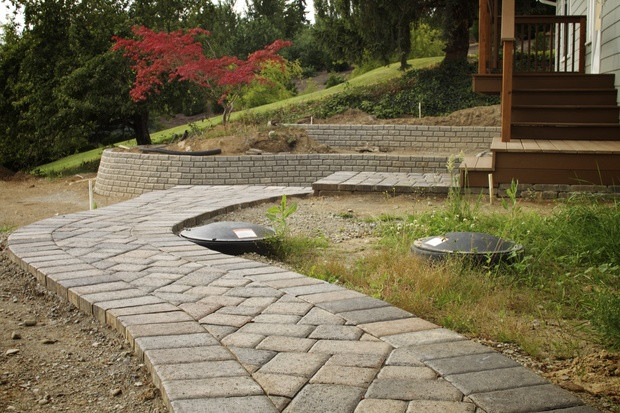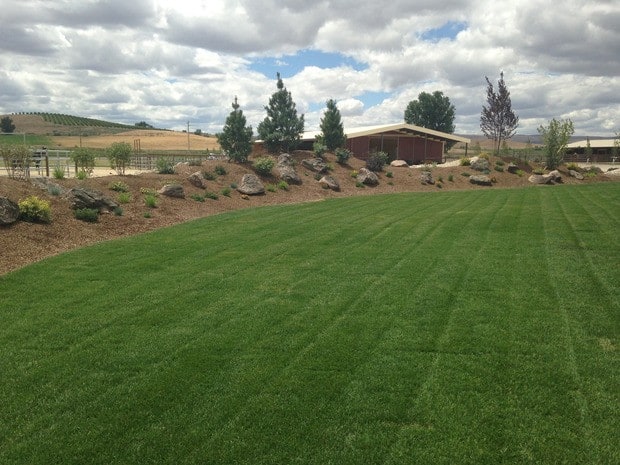Your lawn endured a lot of snow, ice and harsh wind this past winter. Now that spring has come to melt the last of the freeze, it’s time to survey the grass and see what you need to do to bring your lawn back to life. It may be able to bounce back on its own, but it may need some help. Here are some tips on reviving your lawn for the warmer months ahead.
1. Clean Up the Yard

With the buildup of leaves, dirt and debris, there’s a good chance your lawn will require a thorough cleaning. Use your hand tools to clean away everything that covers the grass – or use a blower if that’s easier. If there are any plants, shrubs or trees that didn’t survive the harsh winter, it’s time to remove them.
Any plants that did survive the winter – shrubs and trees in particular – will need to be pruned and trimmed to allow for new spring growth. You can do this yourself on a weekend or have a professional come in. The cost of professional tree trimming averages $250 to $500, depending on the type and number of trees to trim. Removing excess debris also allows you to see any bare, short or messy areas in the grass that may need extra care.
Renovating your home?
Find out what your home's worth, edit facts, and see the impact of home projects.
2. Aerate the Soil
Renovating your home?
If your soil was packed down by snow and foot traffic over the winter, it’s going to be hard for the roots to get necessary nutrients and grow. In this case, you’ll need to aerate the lawn and tousle the topsoil to allow nutrients to move freely. There are two methods of aeration: poking holes in the lawn or using a plug aerator. To ensure your lawn is aerated properly, it’s best to hire a professional. This typically costs between $50 and $200. You can rent a plug aerator and do the job yourself if your lawn is small. It depends on your time and budget and the size of your lawn.
3. Get Rid of Dead Grass

Over the winter, your grass was probably matted down and flattened as snow and ice piled up. While the grass will start to rise again as spring continues, some of it may have died. Too many grass clippings could be left from your first mowing, as well. The best balance is less than half an inch of clippings, because more grass will prevent the soil from getting the necessary nutrients. If you have a lot of dead grass on your lawn, you need to think about dethatching it with a rake. Taking the rake, simply remove any dead or excess grass so your soil and living grass can breathe and access nutrients.
4. Handle Weeds and Their Seeds
As your lawn starts to recover from the winter, last year’s leftover weeds and seeds start to re-emerge. This is the time to take drastic measures against weed invasion. Look for any weeds that are starting to grow back and pull them up immediately. For any seeds that might be growing or starting to awaken in the soil, take preventive measures. Spray an herbicide over your lawn so it kills the seeds before they turn into adult weeds. You can also use a non-chemical approach to preventive weed treatment, such as cornmeal. Just be sure to do it early in the season before you water or apply any fertilizers that could spur weed growth.
5. Seed or Sod?

There’s a chance the winter weather killed parts of your lawn, leaving barren patches to cover. You have two approaches to handling these areas. You can buy and plant seeds, then water and wait for the seeds to grow. Or, if you’re in a hurry to cover the patch, the quick solution is to buy sod, which is pre-grown grass. Landscape contractors can lay down sod for between $1,000 and $2,500. Keep in mind that the sod grass may not be an exact match to your existing grass.
6. Add Nutrients
Once you’ve addressed the bare areas and gotten the lawn cleaned up, it’s time to give it some nutrients. You probably stopped applying fertilizer, mulch and water back in the fall. Now that spring is here, it’s time to give those nutrients back to the lawn. Apply fertilizer to your lawn and garden beds. Mulch is particularly professional looking and effective for garden beds and around trees, especially if you don’t have edging in place. Watering is best done in the morning – just be sure not to drown the lawn. This is true for seeds and sod as well. Don’t water in the middle of the day, because the sun will evaporate most of the moisture.
Looking to save money on your mortgage?
7. Keep It Well-Maintained

To keep your lawn in good shape through spring and into summer, make sure you mow in regular intervals. Your grass should stay at three inches long until fall, otherwise it could dry out. Fertilize intermittently, as too much could lead to pests and weeds. If you need help with the upkeep, you can always call professional landscapers who can come to your house on a weekly, semiweekly or monthly basis. Check out this post for tips on spring curb appeal.
About Andrea Davis
Andrea Davis works for HomeAdvisor, which helps homeowners find the right home improvement professionals and now makes the process simple from start to finish for everyone using Mhelpdesk. Homeowners can use HomeAdvisor Reviews to see what past customers have to say about each professional, and can calculate average local and national costs for a variety of home projects using Cost Guides. Access to all information and features is free for homeowners.
Note: This is a guest post; the views and opinions expressed are those of the author and do not necessarily reflect the opinion or position of Redfin.


























 United States
United States Canada
Canada